High mountain ranges across the world are home to some of the planet’s most unique and elusive wildlife. These animals have evolved to survive in extreme conditions, from frigid temperatures to low oxygen levels. Many of them are found nowhere else on Earth, making their habitats crucial for biodiversity. This article explores a range of fascinating species that are endemic to some of the world’s highest peaks, showcasing how they’ve adapted to life in these challenging environments.
Himalayan Snow Leopard
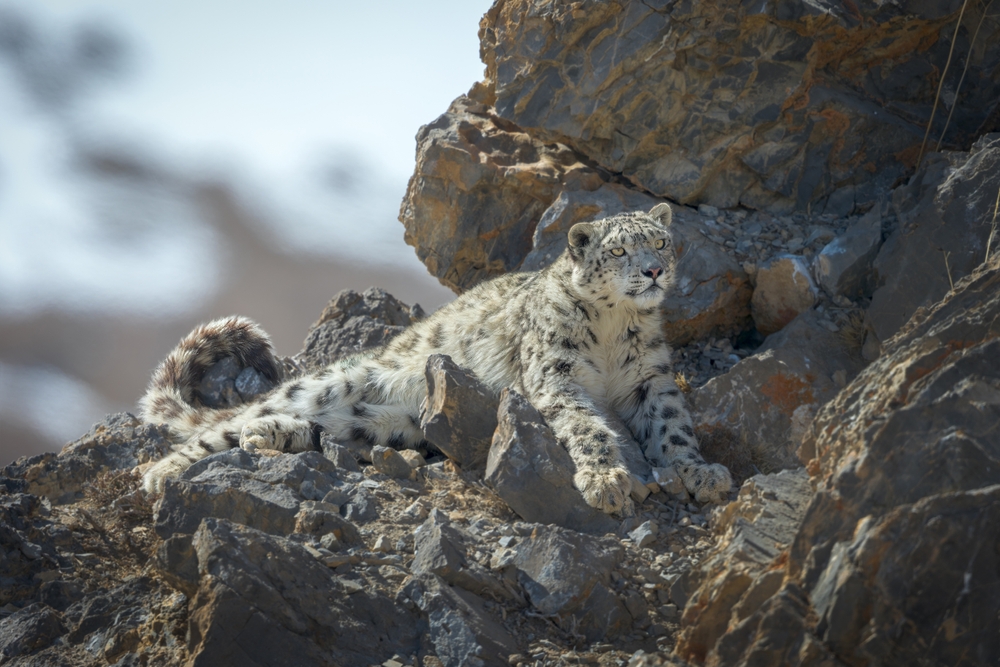
The snow leopard (Panthera uncia) is a magnificent predator, endemic to the high-altitude ranges of the Himalayas. Living between 3,000 and 5,000 meters above sea level, this elusive big cat has evolved to thrive in rugged mountain landscapes. Its thick, smoky-gray fur, marked with rosettes, provides both camouflage and warmth in the frigid conditions of the Himalayas. They are known for their incredible agility, capable of leaping up to 15 meters in a single bound, making them highly effective hunters on steep slopes. Their diet primarily consists of blue sheep, ibex, and small mammals, which are also native to this region. In addition to their striking beauty, they are highly solitary, making them difficult to spot. Conservation efforts have intensified in recent years due to habitat loss and poaching, pushing the species toward vulnerability.
Andean Mountain Cat
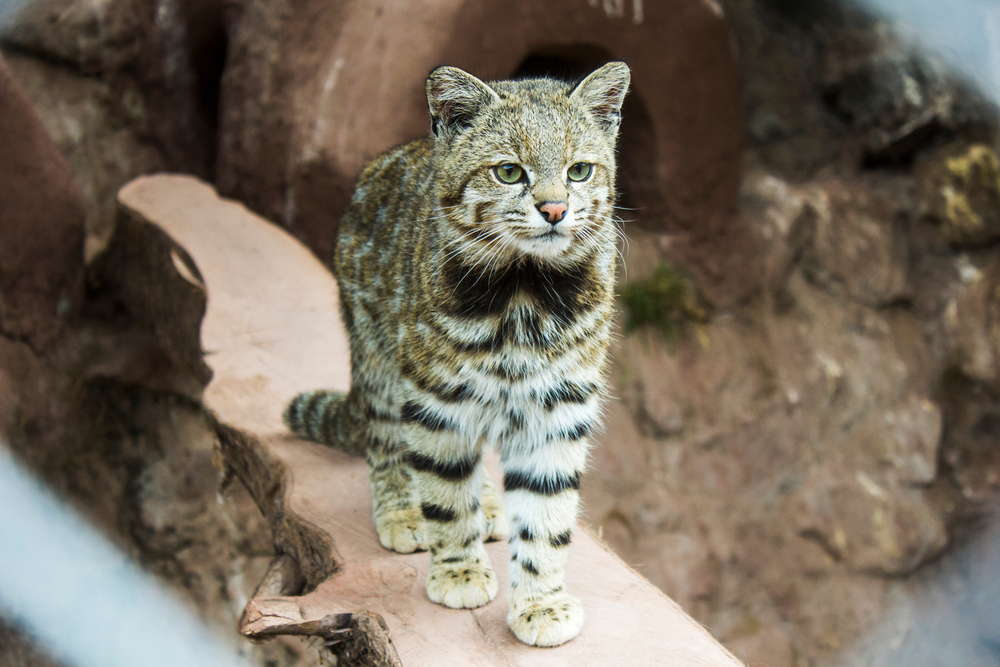
The Andean mountain cat (Leopardus jacobita) is one of the rarest wild cats in the world, native to the remote mountain regions of the Andes. Found at elevations of up to 4,800 meters, this small feline has adapted to the harsh, arid environment of the high Andes in countries like Chile, Bolivia, and Argentina. Its thick, soft coat is a pale gray color, allowing it to blend seamlessly with the rocky surroundings. Measuring just about 70 centimeters in length, it feeds primarily on small mammals such as viscachas and chinchillas, which are also native to the area. It is a highly elusive species, rarely seen by humans due to its remote habitat and solitary nature. Its population is critically endangered, with fewer than 2,500 individuals estimated to remain in the wild.
Himalayan Tahr
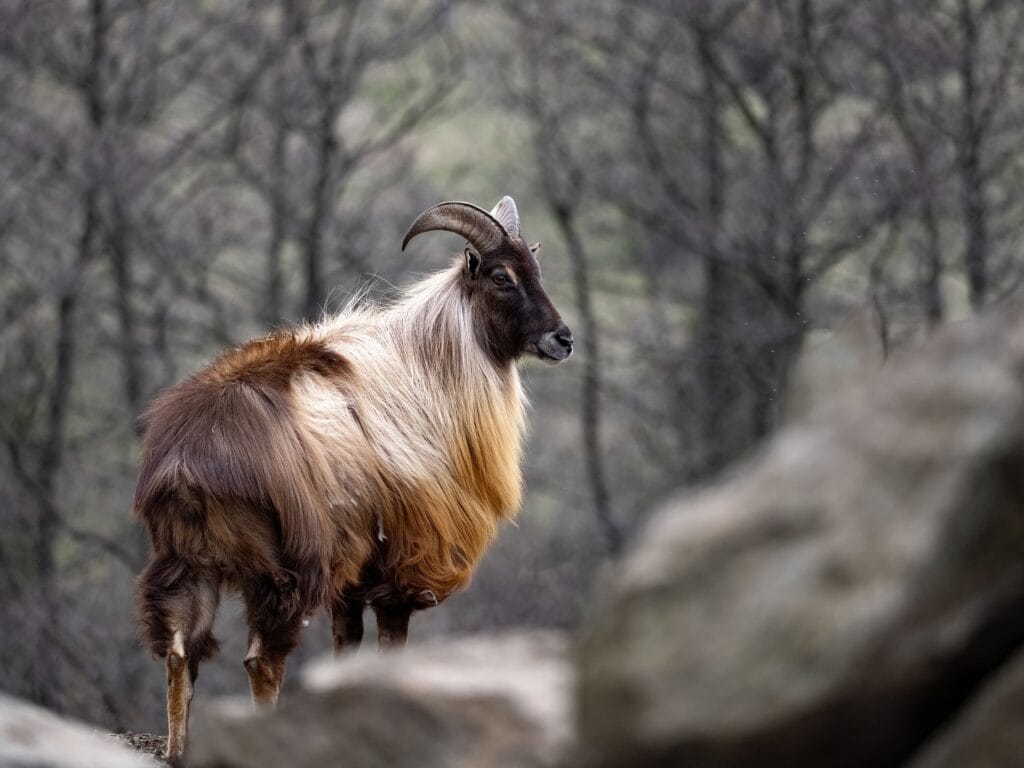
The Himalayan tahr (Hemitragus jemlahicus) is a large herbivorous mammal found in the steep, rocky terrains of the Himalayas, primarily in Nepal, Bhutan, and northern India. This shaggy-coated ungulate has thick reddish-brown fur that provides excellent insulation in the cold, high-altitude environments where it resides. They are exceptional climbers, often found grazing on steep cliffs and rugged terrain between 2,500 and 5,000 meters. They play a crucial role in the mountain ecosystem by grazing on grasses, which prevents overgrowth and maintains the balance of the local vegetation. Males are easily distinguishable by their larger size and impressive backward-curving horns, which can reach up to 46 centimeters in length. During the breeding season, males engage in fierce battles for dominance, using their horns in dramatic displays.
Tibetan Antelope
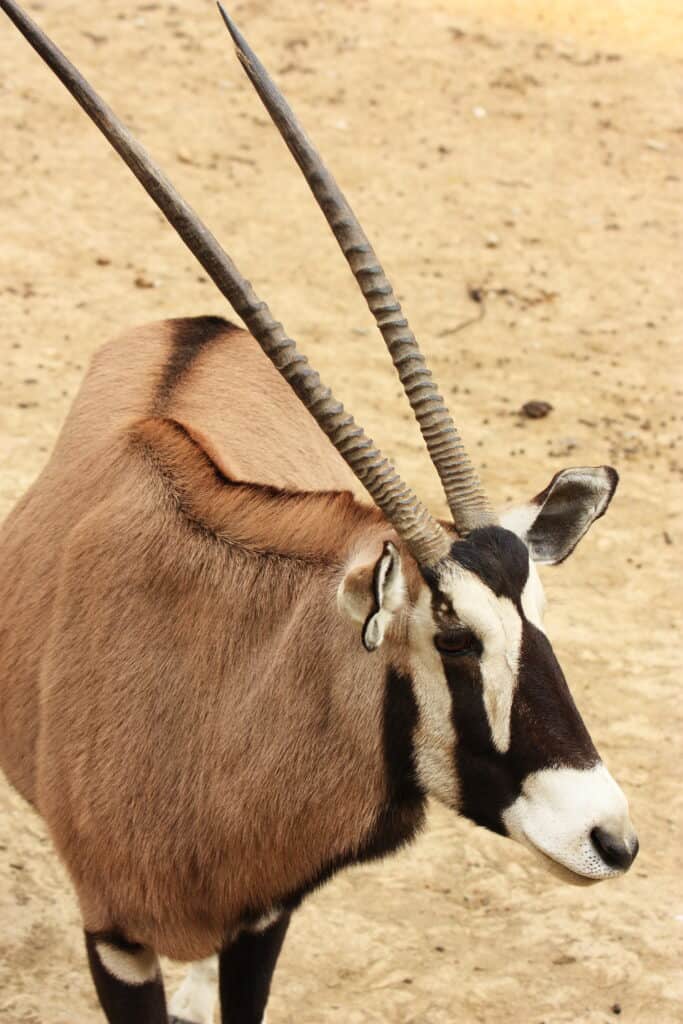
The Tibetan antelope (Pantholops hodgsonii), or chiru, is an antelope species endemic to the Tibetan Plateau, one of the highest and most inhospitable regions in the world. They thrive at altitudes between 4,000 and 5,500 meters, where oxygen levels are low, and temperatures often drop below freezing. Their thick, wooly coats insulate them against the extreme cold, while their large lungs allow them to survive in oxygen-deprived conditions. They are known for their annual long-distance migration, traveling over 300 kilometers to find suitable grazing areas. Poaching for their fine wool, known as shahtoosh, nearly drove them to extinction in the late 20th century, but conservation efforts have helped their numbers rebound.
Ethiopian Wolf
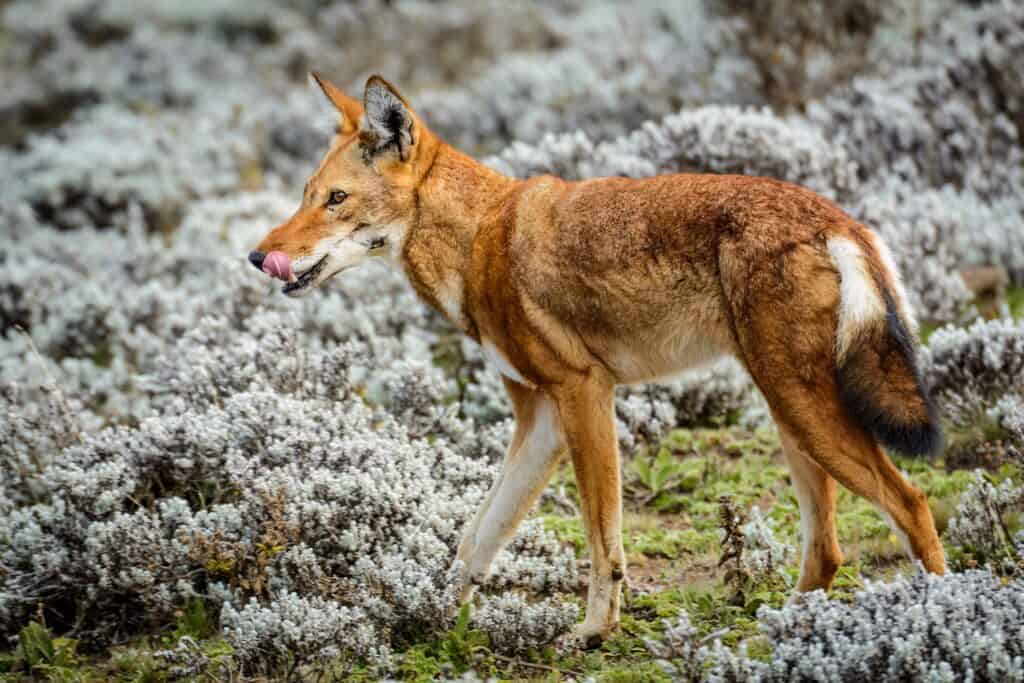
The Ethiopian wolf (Canis simensis) is the world’s rarest canid and is found only in the Ethiopian Highlands, primarily in the Bale Mountains. Living at altitudes of over 3,000 meters, this highly specialized predator has adapted to the cold, grassy plateaus and Afro-alpine meadows. Its sleek, reddish coat and bushy white tail make it easily recognizable, and it hunts small mammals like the giant mole-rat, a species also endemic to the region. They live in packs but hunt alone, relying on their sharp hearing and speed to catch prey. Despite their pack behavior, they are highly territorial, with packs defending their home ranges from neighboring groups. The population of Ethiopian wolves is critically endangered, with fewer than 500 individuals left in the wild, largely due to habitat loss and disease transmission from domestic dogs. Conservationists have implemented vaccination programs to protect these wolves from rabies, a significant threat to their survival.
Bharal (Blue Sheep)
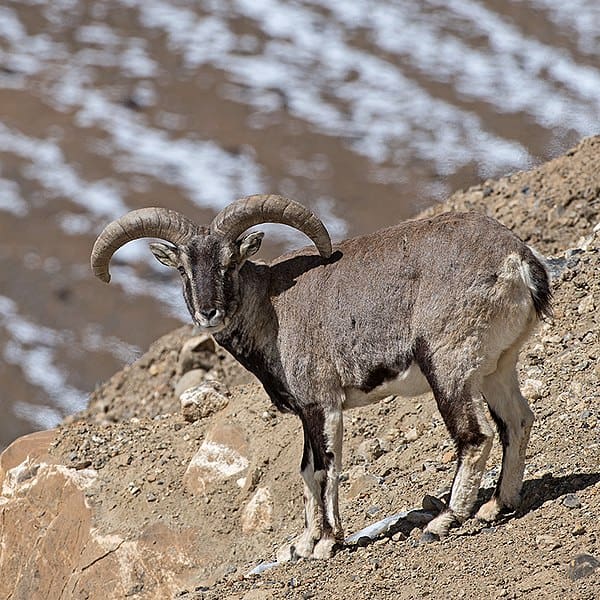
The Bharal, or blue sheep (Pseudois nayaur), is a mountain-dwelling herbivore native to the Himalayas and parts of the Tibetan Plateau. Despite its name, it is more closely related to goats than sheep and gets its “blue” name from the slate-gray color of its dense coat. Found at altitudes ranging from 3,000 to 5,500 meters, they are highly adept at navigating rocky cliffs and steep slopes to escape predators like snow leopards and wolves. Their stocky build, strong legs, and gripping hooves make them well-suited to life in these extreme conditions. They are social animals, typically found in herds of up to 20 individuals, feeding on alpine grasses and shrubs. Bharals play a crucial role in the mountain ecosystem, as their grazing helps maintain vegetation balance. Although they are not currently considered endangered, they are at risk from habitat encroachment and competition with domestic livestock.
Alpine Ibex
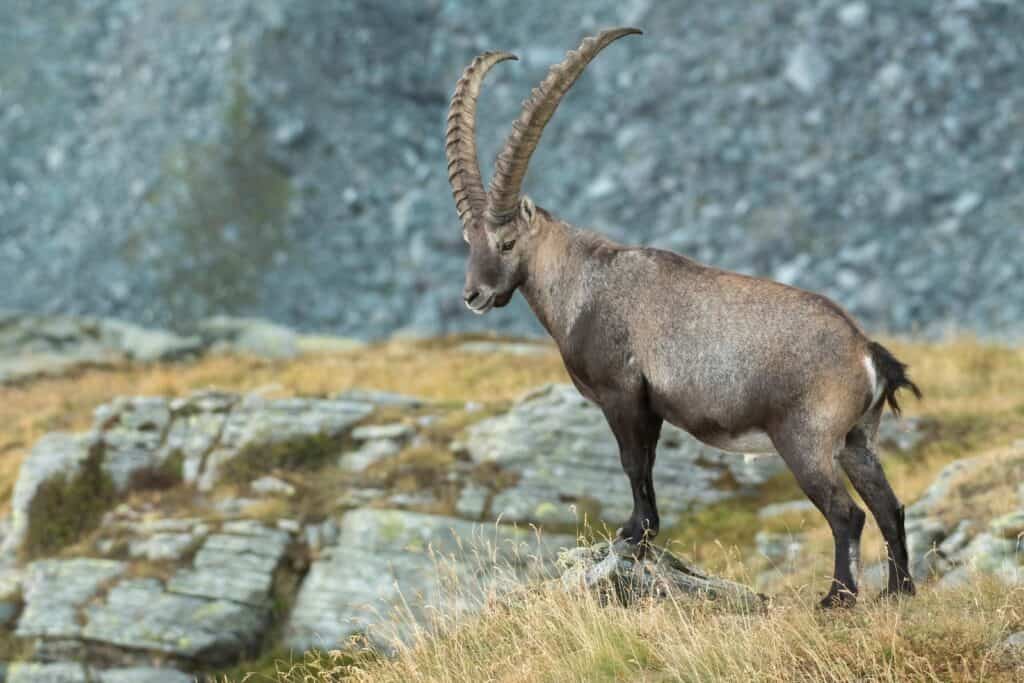
The Alpine ibex (Capra ibex) is a species of wild goat that inhabits the steep, rocky slopes of the European Alps. Found at elevations between 1,800 and 3,300 meters, these remarkable animals have evolved to navigate the rugged mountain terrain with ease. Their large, backward-curving horns, which can grow over a meter long in males, are used for defense and dominance displays during mating season. They have specialized hooves with a split design, allowing them to grip small rock ledges and climb near-vertical cliffs to escape predators. During the summer months, they graze on alpine grasses and herbs, but in winter, they descend to lower elevations in search of food. Once nearly driven to extinction due to hunting, conservation efforts in the 19th century have brought Alpine ibex populations back to stable numbers. They are now a symbol of wildlife conservation success in the Alps.
Golden Snub-Nosed Monkey

The golden snub-nosed monkey (Rhinopithecus roxellana) is a primate species endemic to the temperate mountain forests of China’s Qinling Mountains, found at altitudes of 1,500 to 3,400 meters. These striking monkeys are easily recognized by their thick, golden-orange fur, which helps them survive the cold, snowy conditions of their mountainous habitat. They live in large, complex social groups of up to 600 individuals, making them one of the most socially dynamic primates. Their diet mainly consists of lichens, young shoots, and tree bark, particularly during the harsh winter months when other food sources are scarce. Recent research shows that golden snub-nosed monkeys have unique vocalizations that strengthen social bonds within their groups.
Yak
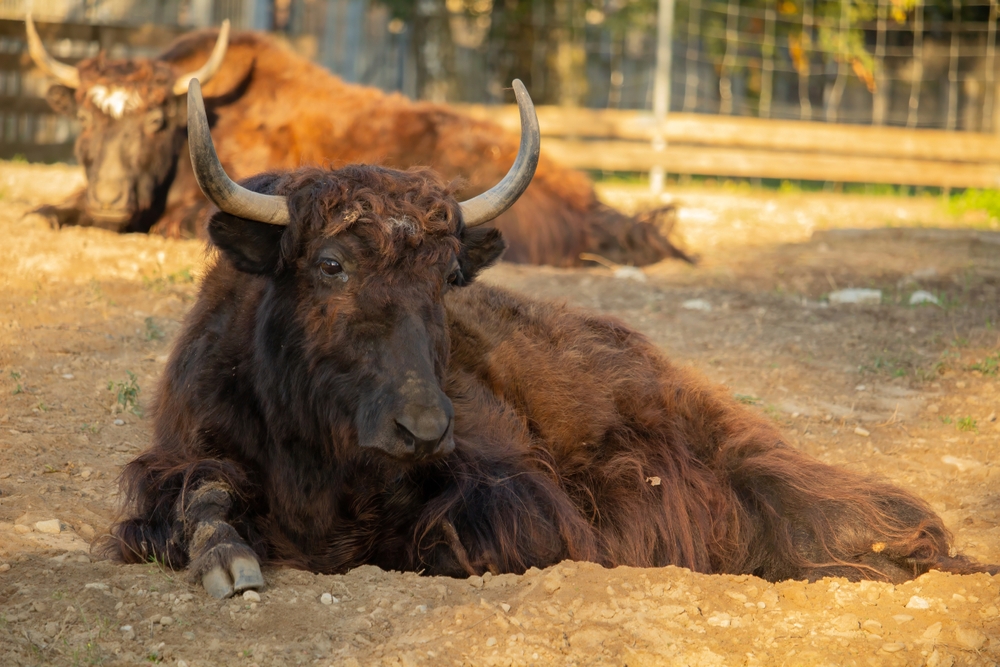
The yak (Bos grunniens), often referred to as the “ship of the highlands,” is native to the Tibetan Plateau, where it thrives at elevations between 3,000 and 5,400 meters. They are well-adapted to life in this harsh, cold environment, with their thick, wooly coats providing protection from temperatures that can drop as low as -40°C. These large bovines have large lungs and hearts, allowing them to survive in the oxygen-poor atmosphere of high altitudes. They are crucial to the livelihoods of Tibetan nomads, providing milk, meat, and wool, and are even used as pack animals for transporting goods across the mountainous terrain. Wild yaks, known as Bos mutus, are much larger and more aggressive than their domesticated counterparts, with males weighing up to 1,000 kilograms.
Himalayan Monal
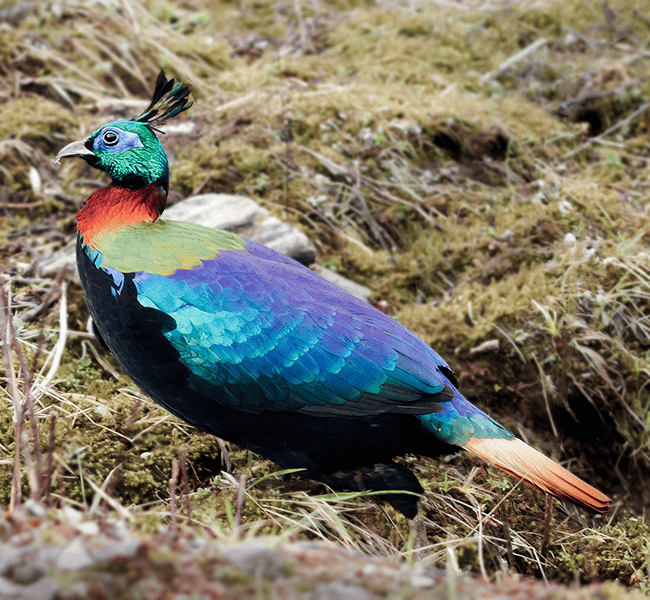
The Himalayan monal (Lophophorus impejanus), also known as the Impeyan pheasant, is the national bird of Nepal and a striking symbol of the high-altitude forests of the Himalayas. Found at elevations between 2,100 and 4,500 meters, this colorful bird is known for its iridescent plumage, with males displaying brilliant shades of blue, green, and red. Its dense feathers provide insulation against the cold mountain temperatures, while its powerful legs are adapted for digging through snow in search of food. It feeds on a variety of plant material, insects, and seeds, playing a role in seed dispersal and the health of the forest ecosystem. Monals are typically solitary or found in small groups, and their ability to thrive in high-altitude conditions makes them an important species for monitoring environmental changes.
Tibetan Gazelle
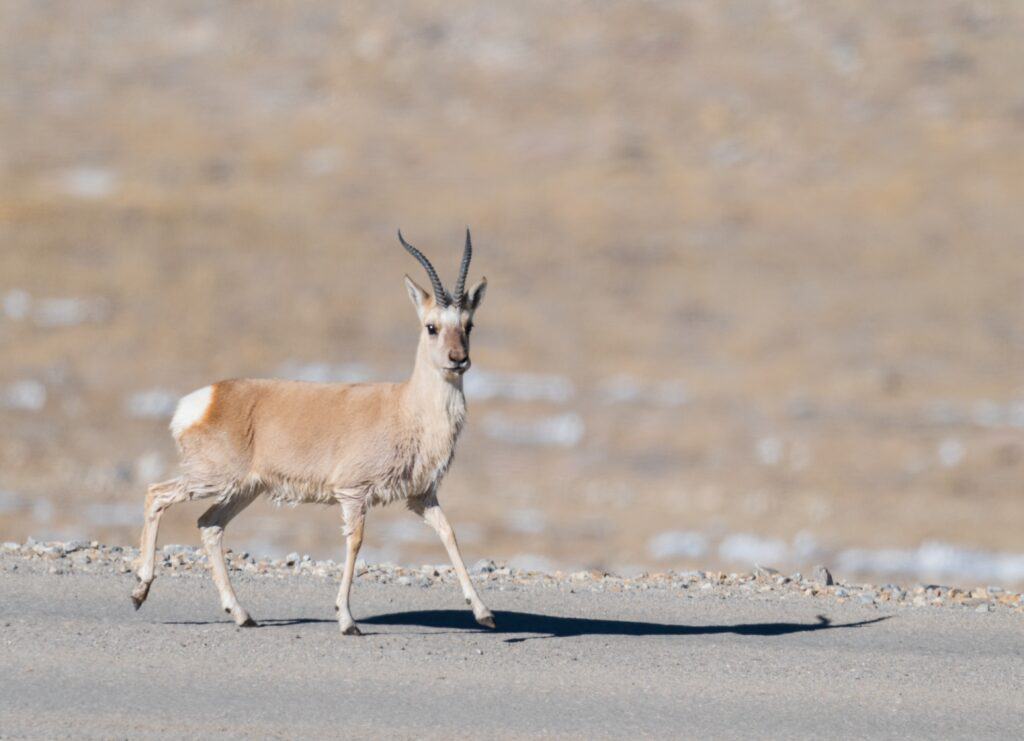
The Tibetan gazelle (Procapra picticaudata), also known as the goa, is a small antelope species found on the Tibetan Plateau, living at altitudes ranging from 3,000 to 5,500 meters. These graceful animals are well adapted to the cold, windswept plains, with their dense fur and small, compact bodies minimizing heat loss in freezing temperatures. They are highly agile and able to sprint across the plateau’s rocky terrain to escape predators like wolves and snow leopards. They feed primarily on grasses and herbs, and their grazing habits help maintain the balance of the high-altitude grasslands.
Ladakh Urial
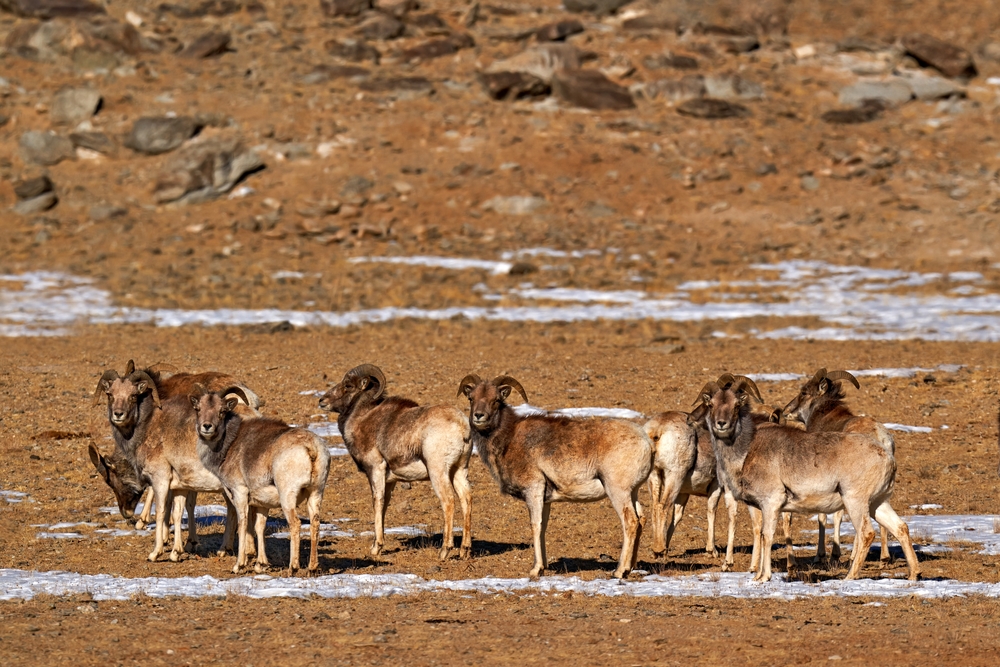
The Ladakh urial (Ovis vignei vignei), also known as the shapu, is a wild sheep species found in the arid, high-altitude regions of Ladakh in northern India and Pakistan. These animals are typically found at elevations between 3,000 and 4,000 meters, where they navigate the rocky terrain in search of food. They have reddish-brown coats that lighten in winter, helping them blend into their mountainous environment, and males sport impressive, curved horns. They are herbivores, feeding on grasses, shrubs, and herbs, and their grazing habits help prevent overgrowth in fragile high-altitude ecosystems.
Rwenzori Red Duiker
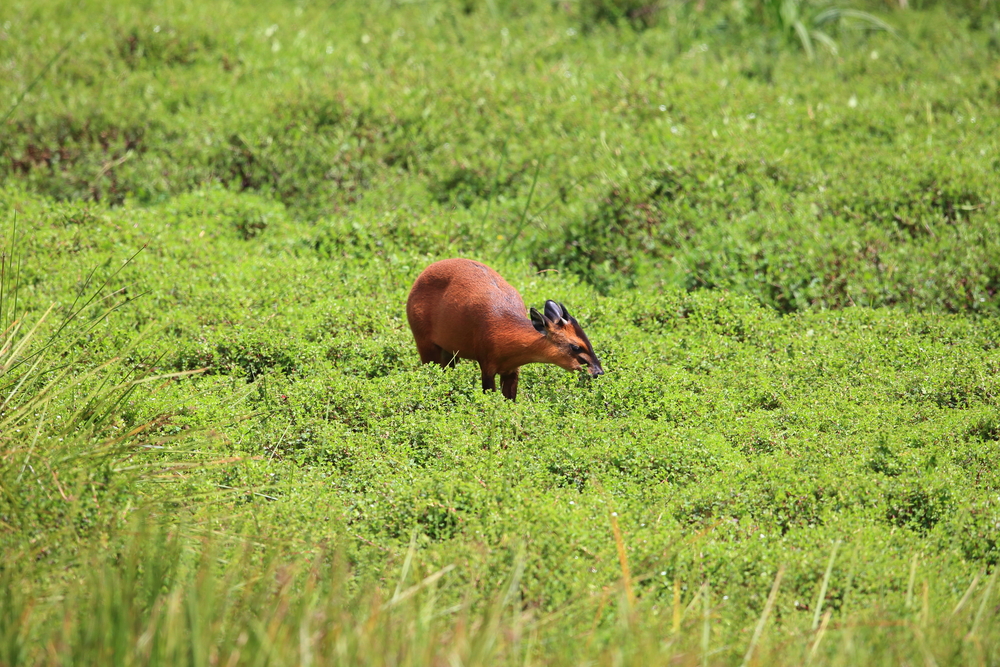
The Rwenzori red duiker (Cephalophus rubidus) is a small antelope species found only in the Rwenzori Mountains of Uganda and the Democratic Republic of the Congo. Living at altitudes between 2,000 and 4,000 meters, this elusive animal is well-adapted to the dense, misty forests of the Rwenzoris. Its reddish-brown coat provides camouflage in the thick undergrowth, while its small size allows it to move easily through the forest in search of food. They are herbivores, feeding on leaves, shoots, and fruits, and they play an important role in seed dispersal within their ecosystem. Due to their secretive nature and the remote location of their habitat, little is known about their population size or behavior. However, they are considered vulnerable due to habitat loss from agricultural expansion and logging.
This article originally appeared on Rarest.org.
More from Rarest.org
14 Unconventional Ways Athletes Train for Peak Performance

Athletes constantly look for new ways to improve their performance. Traditional training methods are often paired with unconventional techniques to reach peak potential. Read More.
13 Luxury Skyscrapers with the Highest Price Per Square Foot

Luxury skyscrapers are redefining high-end living with their stunning designs, world-class amenities, and prime locations. These towering buildings not only dominate city skylines but also command some of the highest prices per square foot globally. Read More.
12 Underrated Horror Films That Are Surprisingly Good

There are countless horror films out there, but many of the best ones often slip under the radar. Some of these forgotten gems are just as chilling and atmospheric as the classics, offering unique stories and unsettling moments that linger long after the credits roll. Read More.
